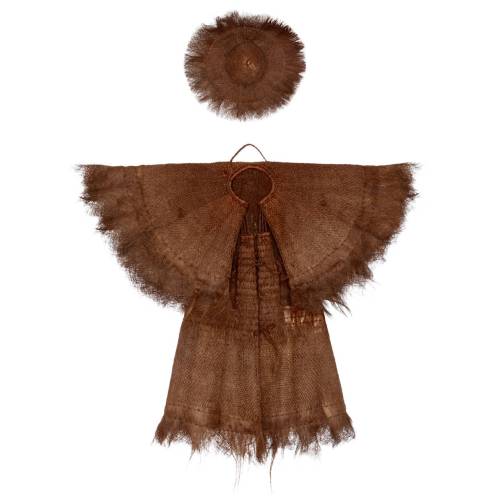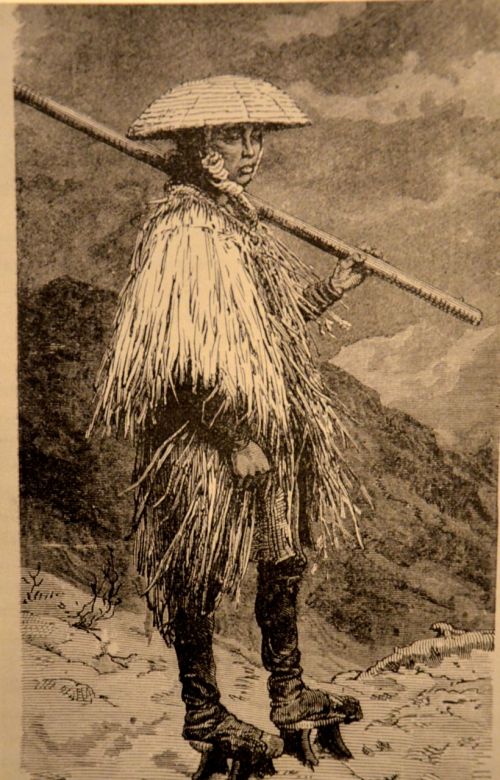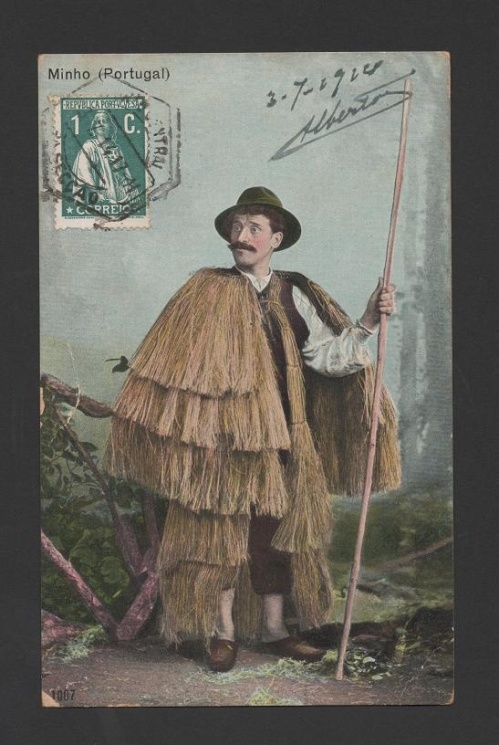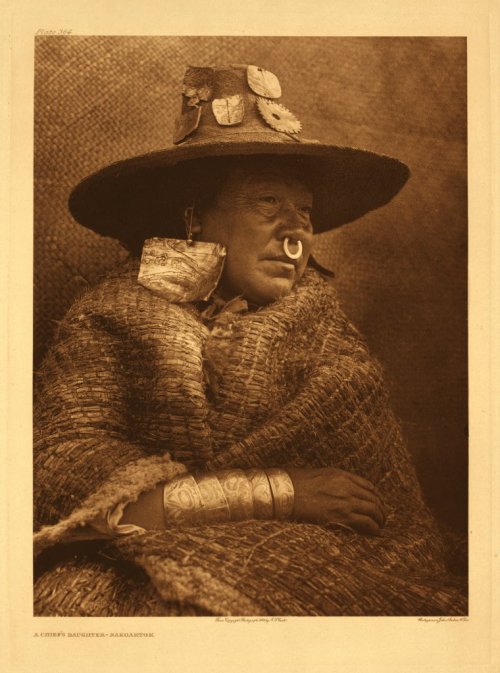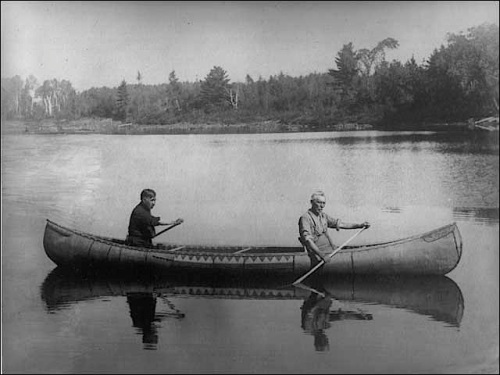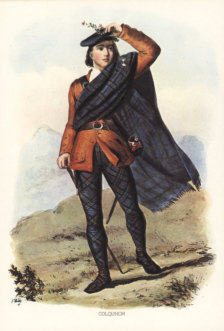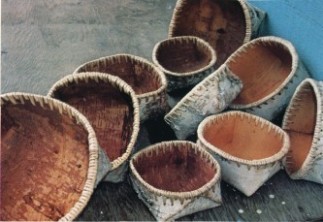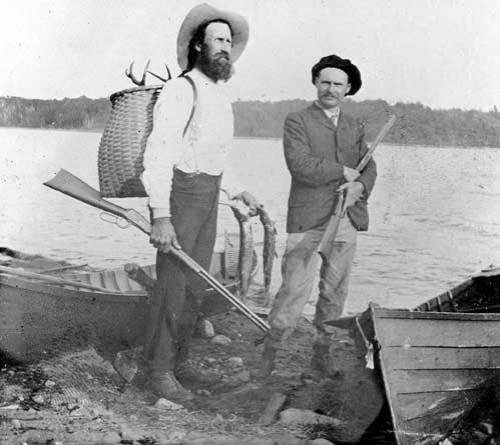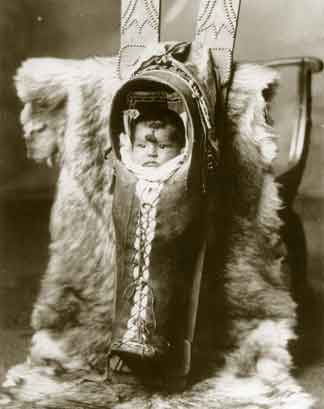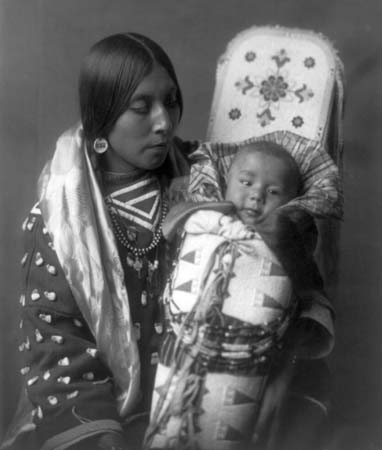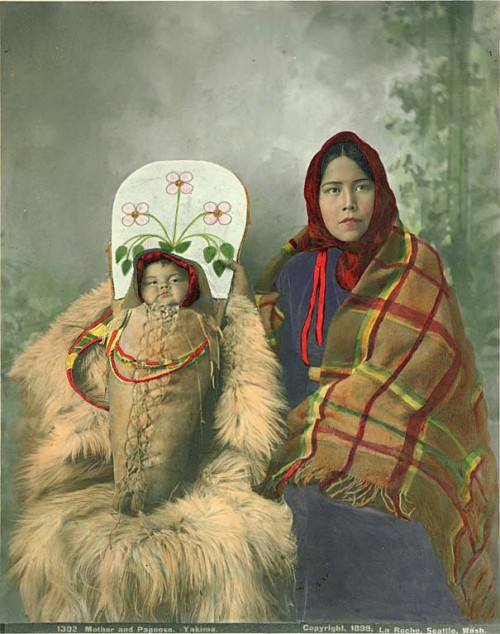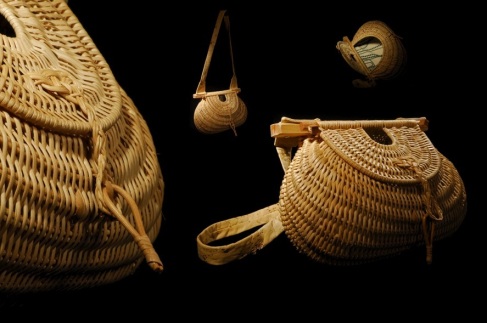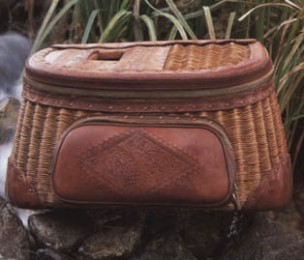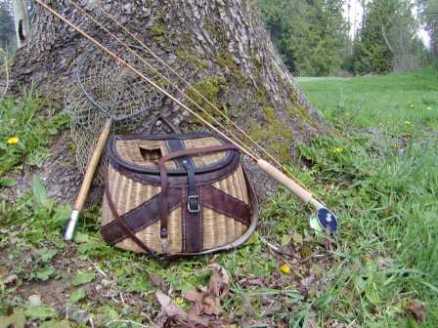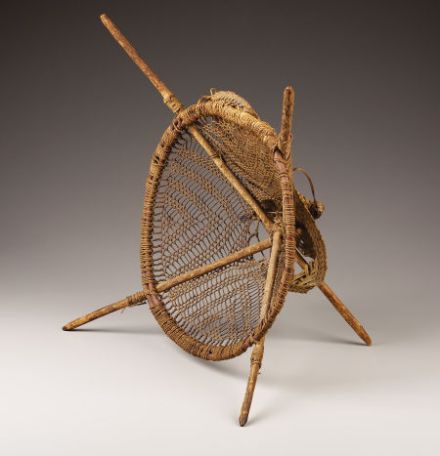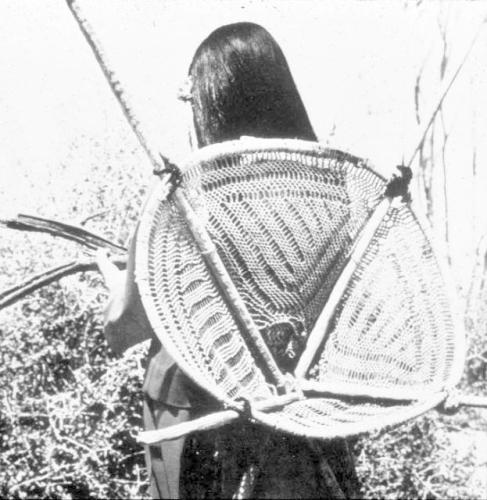For the outdoor enthusiast, canoeist, or artists, canvas backpacks or rucksacks have been the staple carry-all accompaniment. Predating synthetics, canvas is a lightweight water-repellent material. Sonically, canvas makes a dull sound apposed to synthetics shrill sharpness, important for stealthiness in the forest from hunting to bird watching.
Aesthetically speaking I find canvas more handsome, the material is drab and gathers a rugged look with age, describing your personal adventures.
The natural drabness means it will match stylishly and not clash with your other natural materials, like a forest camouflage.
Environmentally speaking, canvas is a natural material, it has a relationship with the nature you are exploring, it had little impact in its processing compared to synthetics the by-product of crude. After its long life, (often long enough to be passed down), it can decompose back into the soil.
It is a fact that synthetics never get fully clean, you can see this more as the bags age, the fibers do not breath air, therefore your sweat gets trapped under shoulders and back, and oils stick to oil.
Canvas bags look better with age with only the care of the sun and rain, and maybe some leather conditioner, and have been known to last a lifetime.
That equally expensive space age material pack has a certain limited expiry date.
It should be noted when considering a pack, consider also what you are carrying, and lifestyle, what are your needs from the pack.
Are you using it for school, heavy books, laptops. Hiking in the summer, winter?Portaging by canoe?
The reviewing of these packs is determined by my packing style. I use them all year round, I do plenty of walking, hiking, and biking. And what I like to call bike to hike, in which I bike out to the forest then hike in.
I will pack them with a grocery store baskets worth of food cans eggs and bike home with it on my back.
Negative 30 weather opening it to grab a camera, accessibility is important.
And everyday I would have with me, book, extra layer, sketchpad, pencils, snack, canteen.
Thus for my packing style has few “hard” items, textbooks, laptops, machetes, beer bottles, etc.
FROST RIVER “Summit Expedition Pack”
Size / Volume: Main pack body: 20″h x 11″w x 9″d. 1980 c.i. (Approx.) Side pockets measure 10″h x 5.5′w x 2″d. Front pocket measures 6″h x 9″w x 2″d.
Weight: 3.30 lbs.
Pockets: 1 zip on bottom of flap. 3 external, (2 side with flap and buckle (2 in 1), 1 gusseted zip on front.)
Closure: Para cord cinch, flap over main compartment.
Shoulder Straps: Waxed canvas, 1.5″ cotton web, foam pad, harness leather attachment, attached to yoke ring.
Grab Handle 1″ cotton web.
Lash Points 4 lash squares on flap.
Base: Double canvas.
Materials: 18 oz. waxed canvas, premium leather, solid brass hardware.
MADE IN AMERICA
$190

I give this pack a high recommendation compared against the other rucksacks featured in this post. All of which fall under similar size capacity.
Why am I so pleased with this pack? Made in America, solid quality, waxed canvas, outstanding price point for the value. Compare this with a 100 dollar bag made in China, it wouldn’t have genuine leather, sturdy zips and hardware, and the people making it would would not be paid fairly for their work and time.
Frost River also has bags of all sizes and price points, ones more simple and cheaper then this particular model. For example they have a large bike seat bag called The Gunflint Trail Seat Bag that attaches to the back of a bike seat, and then turns into a duffle, that I would love to try out.
This pack has many added features that make it great. Best features; bucket design, with doubled canvas bottom (why I chose this pack). This makes sure it keeps a sturdier shape, up and off your back, and keeps those items protected. Padded straps that meet at metal loop, this means it fits people of any size, extra clothing, and for quick removal.
Plenty of pockets, including interior zipper pocket. Side pockets perfectly fit Field Guide Books. Nifty quick pockets (possible best feature)great for water bottle, sunglasses, camera, etc.(see picture). Four lash points to attach bike light, or straps for a bed roll! I in fact use these seemingly decorative squares on my bike rides while heading out for a picnic in the woods.

Waxed Canvas at no extra cost, means ultimate water repel-lance, important for me and my sketchbooks.
This pack beats out its competitors, I replaced my Duluth Pack(reviewed below) with this one, (sorry Duluth Pack).
Take a look at their website, and support your fellow citizens that make great hand made products that last, help keep everyone working and off the bread line. Down with outsourcing!
https://www.frostriver.com/

quick pocket




SWISS or “SALT & PEPPER” CANVAS RUCKSACK
Dimensions:
Width: 17 ”
Depth: 6″
Height: 21″
Weight: 5 lbs (2kg)
(one exterior pocket)


The Swiss Rucksack is a serious piece of outdoor luggage. A miilitary bag made throughout a number of decades, until eventually switching over to a rubber. This pack has a date stamped into the leather 1958!
Features many ingenious designs. The bag has an internal frame, quick release strap, extendable collar, full grain hide bottom, sturdy leather straps, flecked green canvas. But most importantly is the stretched cotton lumbar suspension, across the lower bottom.
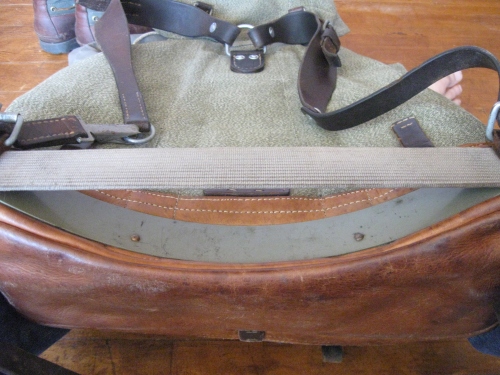
This suspended double strap takes load weight off shoulders and cushions it in one area. Space is formed between your back and the pack which allows air heat and sweat to pass. The full grain leather straps have an extra or double strap up top that allows further customization to body type, bringing the lumbar up higher or lower on the back.


One of the best features on this pack is that on one strap a metal grommet is hinged that allows a swivel to the strap, this swivelling makes the strap elbow in a way. If you have ever had to have one strap of your pack longer then the other so that you could take your pack of comfortably this fixes that. You can have both straps set very tightly where they should be and this swivel allows you to throw off your strap freely.
The downside is this pack is natural weighty do to all the thick leather, it is most comfortable when fully loaded, the lumbar then curves to your back under pressure. However if you have very little, you still feel like you are carrying weight.
This is a structural pack, if you are mostly carrying soft items, the structure of this pack is not necessary, and the weight of this pack comes from its structure(leather bottom, metal).
I tried this bag for biking, and found it worked quite well, but sold it due to my soft packing style and wanting simply a sack. This pack excelled when carrying very heavy loads, but when empty it seemed heavy and not as comfortable.
Unless you are on a very serious adventure, I would not suggest this for day hikes, or city travel(takes up much space).
All of these bags are vintage, you can find them on average $150 – $250, depending on market and condition.
Some packs have different hardware or no lumbar, do your research when buying to make sure you have the parts you want.
Aesthetically speaking the pack structure makes sure it is more furniture, it sticks out even when empty and stands upright on a floor like a piece of furniture, for me this was a negative aspect because it was always taking up space.
Otherwise the leather straps are handsome and the rugged thick canvas has a peaceful speckling of forest greens.
THE SWEDISH (THREE CROWN) CANVAS RUCKSACK
40 Litre capacity
(one internal pocket)
extra buckles underneath for blanket?
and on side for ax, shovel, or rifle
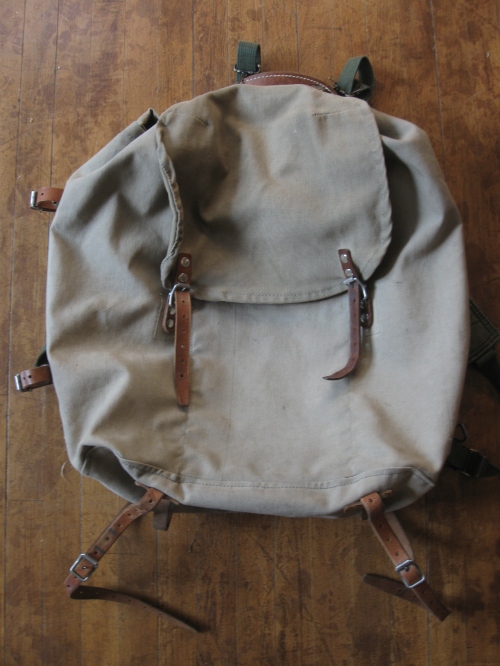

*Note* I found mine at a thriftstore, it is an unusual version, has different straps then usually found and no frame.
The Swedes produced a large military sack, more reminiscent to a canoe bag.
What I love about this bag is that, empty it takes up no space, but can be filled HUGE, I have fit a few blankets in it, and even a large hand drum. Reminds me of Santa Claus’ sack.
The canvas is sturdy thick soft and a very subdued natural shade, thumbs up on the canvas.
Access is quick, a chord tightens around the opening and exits out a hard leather patch in the back where you make a slip knot. Since the lid is not attached to the straps you can just close the drawstring in a pinch with little loss of structural support.
This has been very handy when bush exploring when I need to just “zip” up and get to another area.
The full pack has leather straps an external frame and leather lumbar.
I have not gotten to try the pack with these features, I am curious how the extra weight will be and lumbar system. The external frame would certainly make the bag bigger(cumbersome possibly), and less aesthetically satisfying.
But I believe the leather lumbar would be a great asset for this pack.
The canvas is doubled on the bottom which is great for structure and comfort.
DULUTH PACK “Wanderer” (Duluth, MN)
16H x 15W x 6D + pockets
un-waxed version 2.7 lbs. $220
waxed canvas 3.2 lbs ++
(3 exterior pockets)
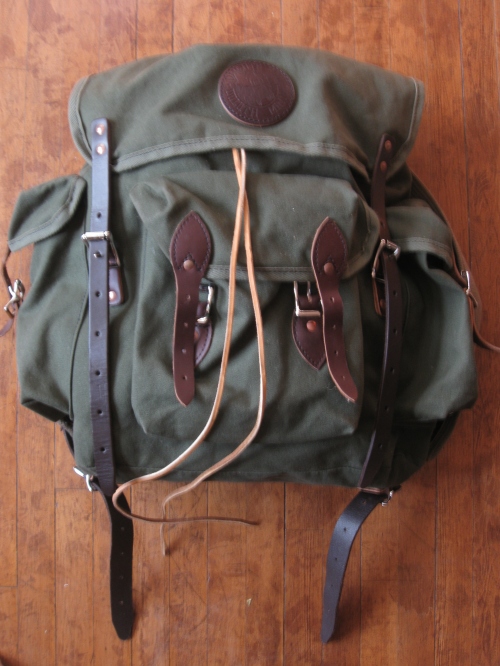

Recently I decided to invest in a new pack and since Duluth is so close by, I decided to try a Duluth Pack, “Wanderer”.
Makers of canvas canoe packs since 1880s, and still made by hand locally in Duluth, Mn.
The pack can be found in waxed and un-waxed, this “review” is for the UN-waxed version.
I have many good things to say about this pack, however my initial criticism of the pack would be that I wish the canvas was thicker, it is comparatively thinner then my other packs, which makes it lose structure of hard items, which can poke into your back. I believe doubling of the canvas on the underside would have been a great idea.
The pack has three pockets on the exterior, using leather belts to close. The straps are a cotton webbing which are actually quite comfortable as they form well to your body.
I have not tried many leather straps to compare them against.
All the pockets on the outside are nice, however I do wish there was one on the inside. But that is always the case isn’t it, more pockets! I may be being greedy, for this pack does already have more pockets then many of the other packs out there. Comparing to my Three Crowns I found one open pocket inside the sack is so very handy, because once you have the bag open you have already opened a pocket for stuff that could be lost inside also.
The long leather lid straps allow you to roll a picnic blanket, sweater, or harvested birch bark secured under the lid. And with the lid over the back straps, the drawstring can be closed in a pinch, when you need to move a few feet and not worry about securing the leather lid straps, a handy feature with little lack of structure.
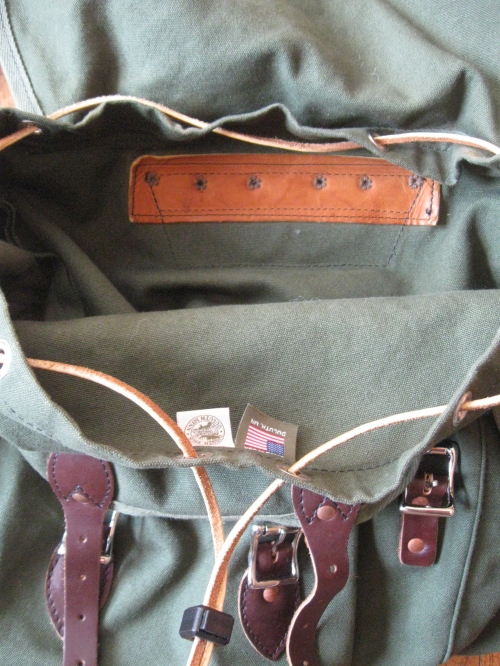
I did found it to be very comfortable loaded, possibly more comfortable then when just partially full. As with all the rucksacks, being properly packed makes it lift up and off the lower back.
Recently I had it fully packed with books, and clothing, and groceries, I was surprised at just how much was inside and that it was still manageable.
I would suggest this particular Duluth Pack, (they make many types of bags), best suited to day hikes with mixed contents. This pack would not be best for students with many textbooks, they do make a student/laptop backpack.
This is a very handsome pack, in rich colors that will mellow in age, copper hammered leather belts, and a contrast leather chord for the closure, and all hand made in the USA.
*Duluth Pack offers a lifetime warranty on repairs for their packs.*
“We stand behind our work and are proud to offer a lifetime warranty covering all craftsmanship and hardware we use in the construction of our products.”
http://duluthpack.com/

THE FILSON (Seattle)
15″ W x 17″ H x 5″ D
3 lbs, 11 oz
$290
I currently do not own a Filson, and so havent field tested it. Am only offering you the the specs for comparison.
